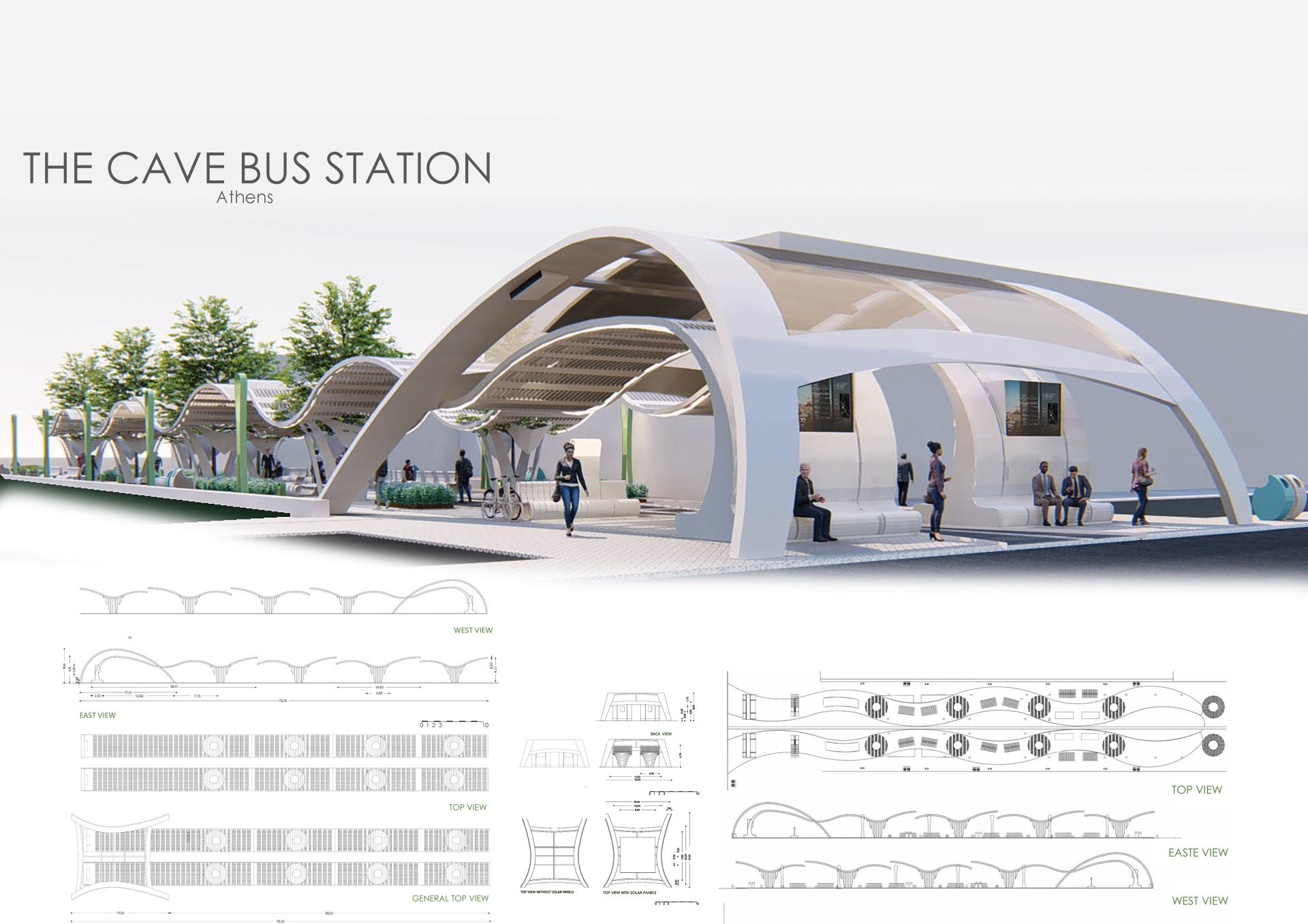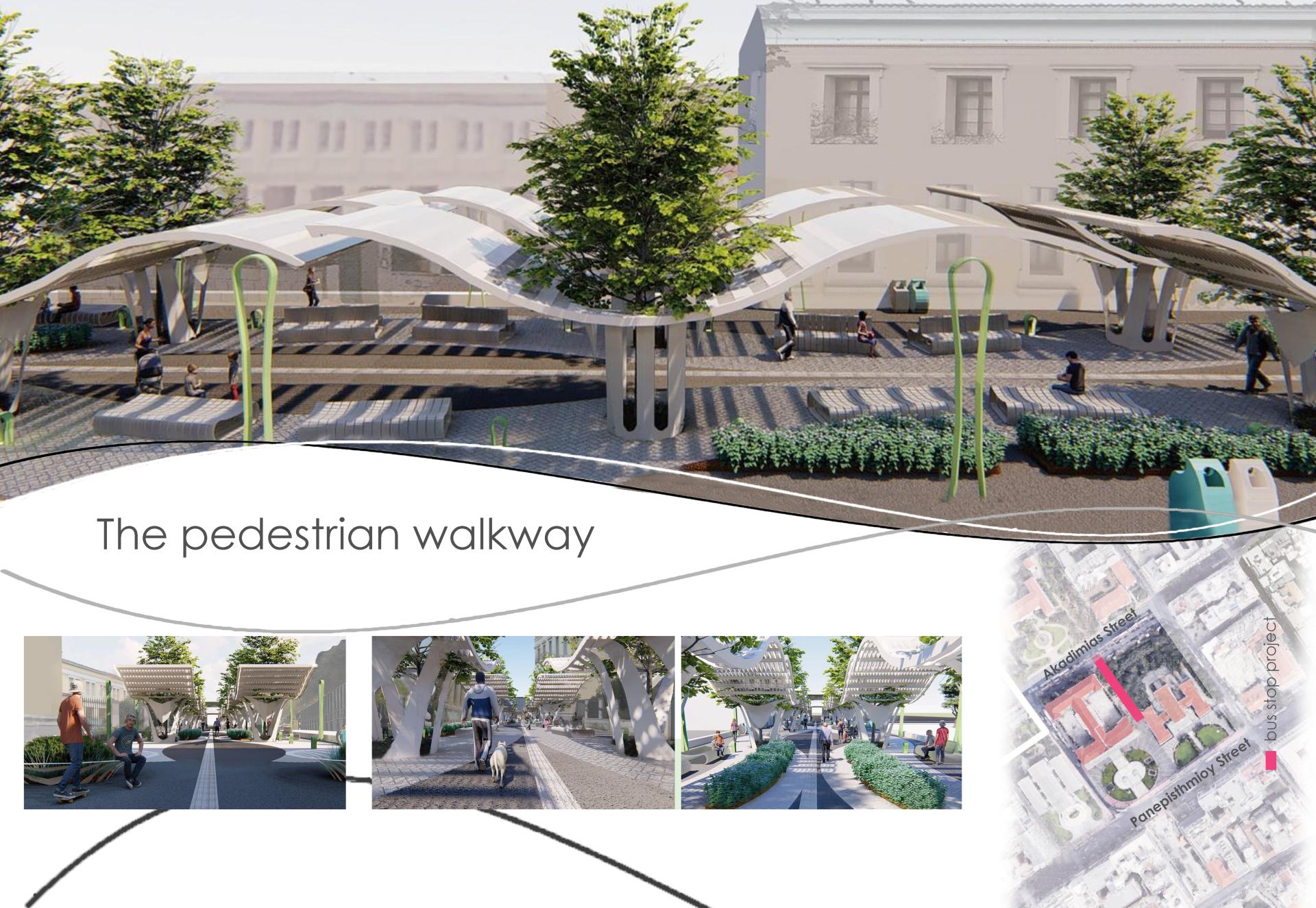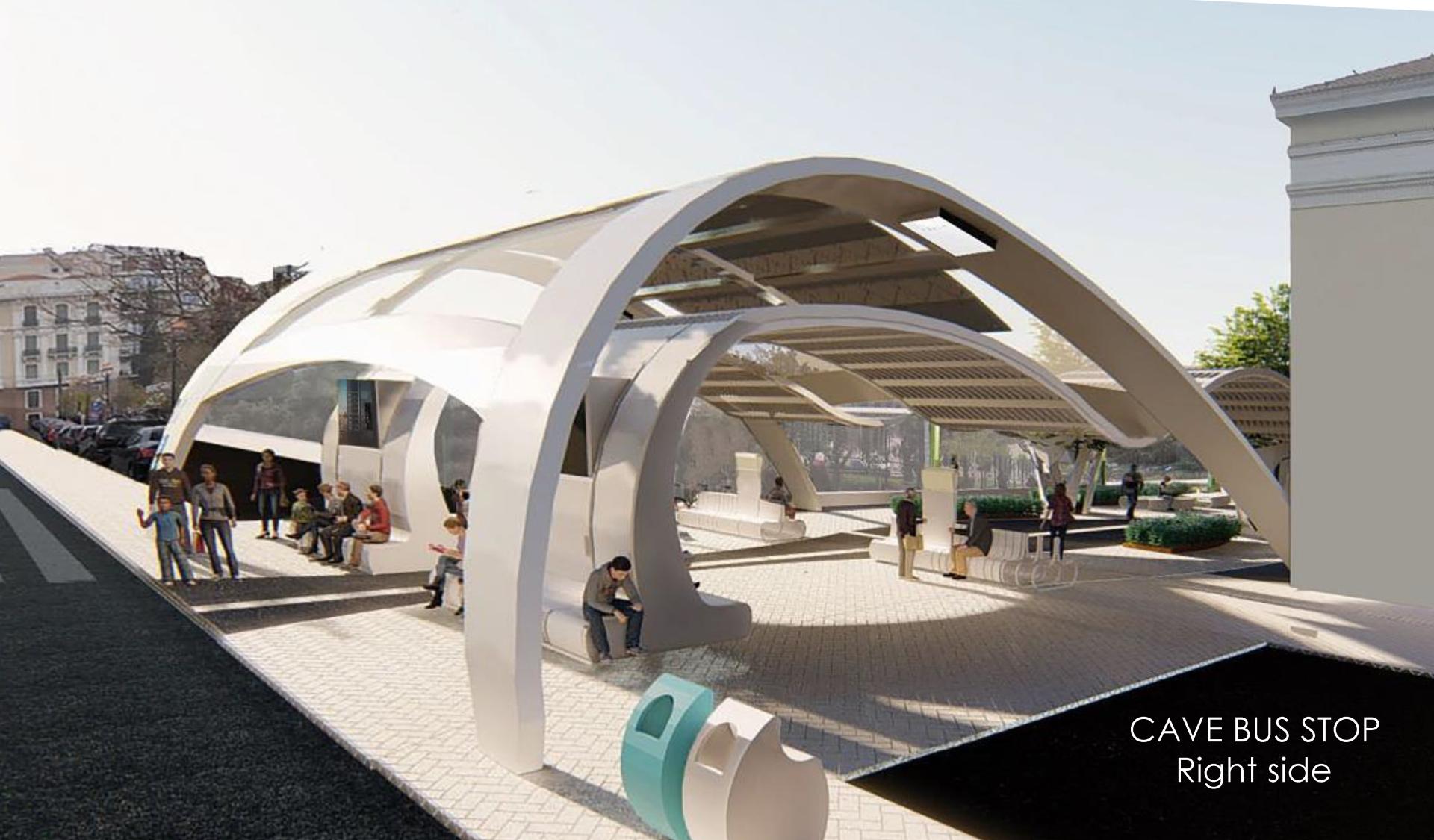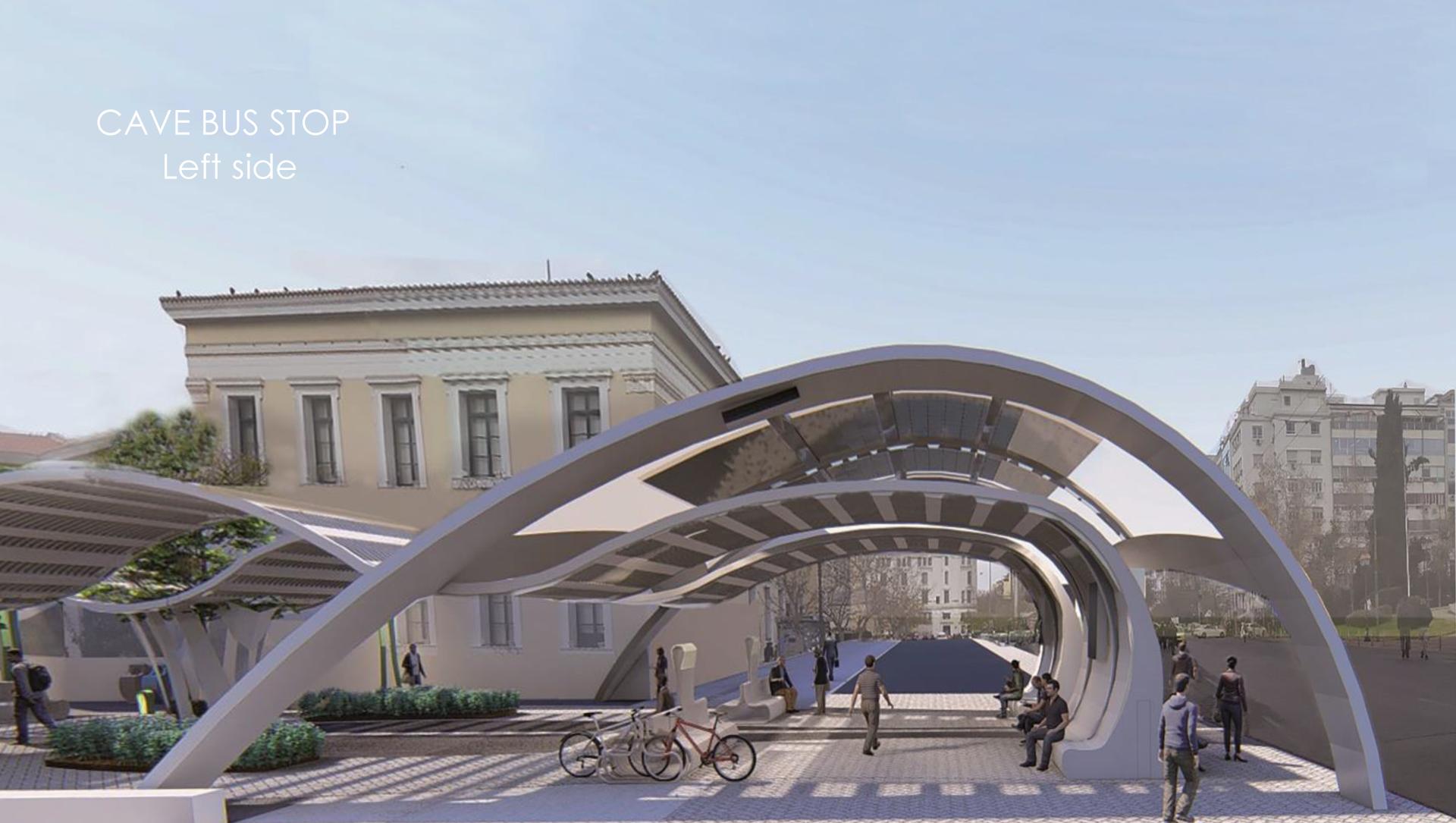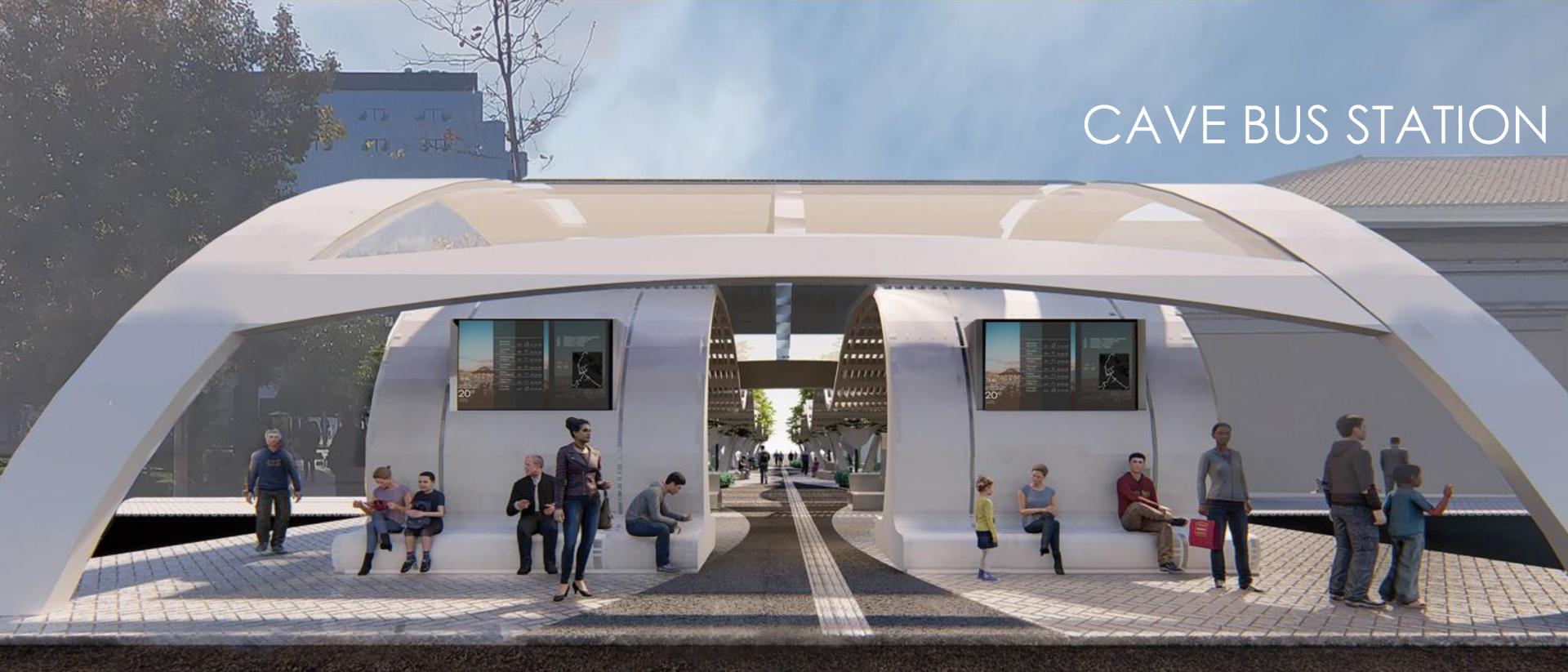The Cave Bus Station
Basic information
Project Title
Full project title
Category
Project Description
The idea is the reconstruction of a bus stop and the renovation of a pedestrian walkway adjacent to it, to satisfy all users' needs at Academia Street in the center of Athens. The main goal is to provide people that commute and travel an environment-friendly green haven that is built upon a sustainable and aesthetic constitution. In parallel the design's cornerstone is the ability of the station to be totally self-sufficient and low maintenance while supporting a continuous flow of people.
Geographical Scope
Project Region
Urban or rural issues
Physical or other transformations
EU Programme or fund
Which funds
Description of the project
Summary
Urban space today seems to be for the most people a hostile space. Everyday life is an odyssey of survival of the inhabitants who live and work in urban areas, in nightmarish cities, in cities that kill people, in cities that are hostile, dangerous and unhealthy. The daily commuting from the living space to other places is getting bigger and bigger. When this movement is forced through amorphous or hostile spaces, the person is psychologically affected and resorts to indifference, depression and loss of inspiration and motivation. The organization of space expresses and influences social relations. The humanization of space can only be done through social collective action and the humanization of man. Man has the ability to create space, to face those forces that make the city a foreign environment is to be human. By drawing inspiration from the first space that the early humans felt safety and contentment, the cave, this design for the bus station was devised to serve as a safe place for commuters and pedestrians of the city. Providing protection from the elements and giving the public space human character the station serves as a beacon of hope as a creation that prioritizes the feelings and the essence of being human, in accordance to the environment, and the self sufficiency that are required in our time.
Key objectives for sustainability
Along with the usability and ergonomic purposes of the bus stop, the resulting creation should be energy independent and environmentally friendly. This will be accomplished by harvesting the renewable energy sources that are abundant in Greece. Especially in Athens which receives an exceptional amount of sunlight each year, making it a perfect candidate for powering using the energy of our sun. Hence it is deemed mandatory that the energy requirement of the bus stop will be satisfied mostly by sunlight and that the city's power grid will be used supplementary only during bad weather conditions. The installation will abide by the principles of an installation powered by sunlight, using solar cells to capture energy and either use it directly or store it in power cells for later consumption. All the materials required for the construction will be chosen according to their environmental imprint and origin. In particular for any part that requires the robustness and elasticity that plastic provides, recycled ocean plastic debris will be used instead, simultaneously cleaning our oceans and avoiding adding more plastic to humanity's debt. In addition, the pedestrian walkway will provide a closer contact with nature by employing trees whose shade and cover will be reminiscing of a nature long lost to urban dwellers.
Key objectives for aesthetics and quality
The way of construction contradicts the neoclassical character of the adjacent buildings without interfering with their aesthetics. The installation employs a modern curvy design inspiring a sense of flow as you walk on the sidewalk. The installation's color is white so as not to impose on the surrounding area given the size of the installation but rather blending in, covered by the foliage of the walkway's trees. The creation will serve as a a symbol of rest for the weary commuter or traveler who traverses through the city's dense stimuli so that he will be rewarded for his perseverance in a place where he can rejoice and breathe, welcomed and safe, in contrast with the typical urban environment.
Key objectives for inclusion
The installation was conceptualized for covering human necessities on forefront. The bus stop features a plethora of seats so that the big crowd of commuters will always have a place to rest either when waiting for their connection or before venturing deeper inside the city. By providing those seats, the users have the option to freely work, read and act in any way they wish, unobstructed, even if their waiting time proves to be longer than expected. Moreover, due to the seats design and number, everyone will have the chance to socialize and make human contact if he/she so pleases. In addition, people with special needs are cared for, the installation does not feature any stairs and all its range can be covered in wheelchair. The ground also offers tactile paving to provide guidance and information to blind people.
Physical or other transformations
Innovative character
The design of the installation expresses the modern design and innovation in contrast with the already existing stations as well as nearby buildings. The surrounding buildings are otherwise not imposed, even though the design is not in accord with the neoclassical style. The view of both the station and the walkway creates a cozy inviting feeling that lures inside its wide space. The composition of the installation of the walkway and the seats is striving to bring people closer to help them socialize and make them feel as joyful and restless as possible throughout their daily life. Commuting mustn't be a burden, but a break throughout the work-day lifecycle. Using the state-of-the-art materials so that the building is respecting the environment and saving on losses and environmental footprint.

